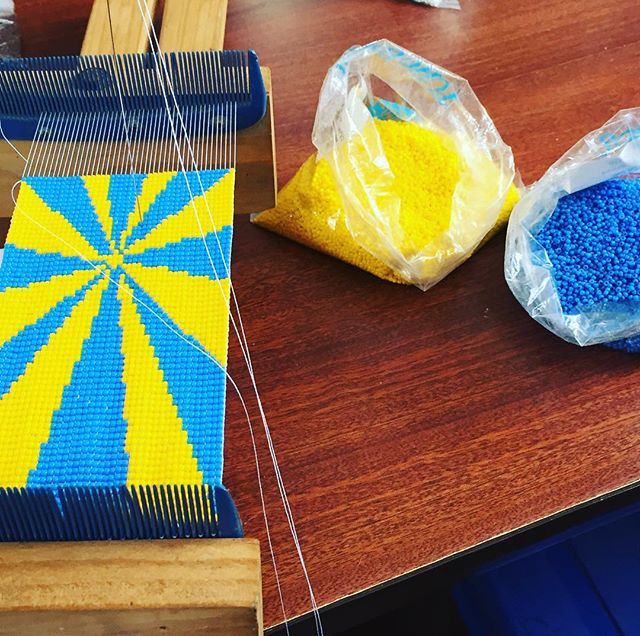beading history
"What Andy Said" bracelet on the loom
Beading is an ancient art from the ancient peoples of the world. It began with simple basket weaving and graduated to fabric weaving. Bead weaving came to indigenous Native Peoples via the European Christians who settled the lands of Canada, North America, South America, Asia & Africa. The Europeans brought with them Italian Murano glass beads for peacemaking & trade. I was always perplexed by the gorgeous North American Native Indian bead work.
I wondered why the flowers were an oh-so- soft lavender color? I knew these colors were not native colors. The reason? Italy. Lovely, beautiful Italian crafted glass beads. Quite an "ah-ha” moment for me.
Native Americans first wove and decorated with porcupine quills. They would split & pound the quills, color them with natural pigments, then weave or wrap them into their decorative clothing and objects.
When the Europeans introduced glass beads, the Native Indians ceased using quills & started employing glass beads with unparalleled beauty and artistry.
The tradition of beading continues, albeit not as widely as in the past.
I’ve paved diamonds for years, covering the surfaces of gold and platinum with delicate mille diamonds. I like the idea of covering Ojen items in these wonderfully smooth brilliant beads. For me, it’s pave with tiny glass beads. The tightly woven beads create a liquid surface with extraordinary tactility.
When you hold these bracelets in your hand, they beg to be stroked like a fine cashmere scarf. The glass bead colors produced in Japan are amazing. Every color of the rainbow and beyond.
From striking primary colors perfect for day time Pop Art fun, to translucent warm tones that rival famous Tiffany stained glass windows.
This collection traverses Modernism, Rock and Pop. Inspired designs with a little glitter & shine thrown in for elegant evening wear.
